Her Whole Truth: A Social Media Campaign for Lisa Montgomery
Summary
Partnered with Cornell Law’s Center on the Death Penalty worldwide, as well as using research from the ACLU and United Nations, our team explored new ways to bring visibility to the female experience on death row and incarceration. We sought to work on a micro level, studying a specific woman’s case, and a macro level, exposing the inhumanity of death row and the carceral system.
For starting research, here are pages from our partners:
The Alice Project: https://www.deathpenaltyworldwide.org/project/the-alice-project/
Save Lisa: https://www.deathpenaltyworldwide.org/project/savelisa/
More details on what the Alice Project seeks to do: https://www.lawschool.cornell.edu/research/dpw/Alice-Project-for-Women-Facing-the-Death-Penalty-Uncovers-Previously-Hidden-Discrimination-Against-Women-and-Girls.cfm
The studies we read, published by Cornell Law’s Death Penalty Institute and the ACLU, demonstrated a glaring problem: a lack of visibility around the female experience on death row.
Goals
First Goal: Cornell Center on the Death Penalty wants to share a well-rounded portrayal of women facing capital punishment in order to illuminate gender-based discrimination against them.
Civic storytelling has the potential to humanize women on death row and radicalize average citizens against the punitive “solutions” we find in our current carceral system. This was a challenge we took ourselves within our initial research steps, examining the impacts socioeconomic status, mental health, and abuse have on the women behind and crimes they are penalized for. We also attended an event where formerly incarcerated women shared their experiences, which was incredibly emotional and granted us access to a greater sense of empathy to women in prison and on death row. Through the same event organizing, we also attended a seminar on storytelling and the power it has in social media movements. The UX of storytelling allows stakeholders to place themselves in the shoes of the accused, something that the prosecution in capital cases seeks to eliminate.
We are aiming to make death row, a structure that seems abstract and foreign to people like us, in positions of privilege, concrete and resolute through empathy.
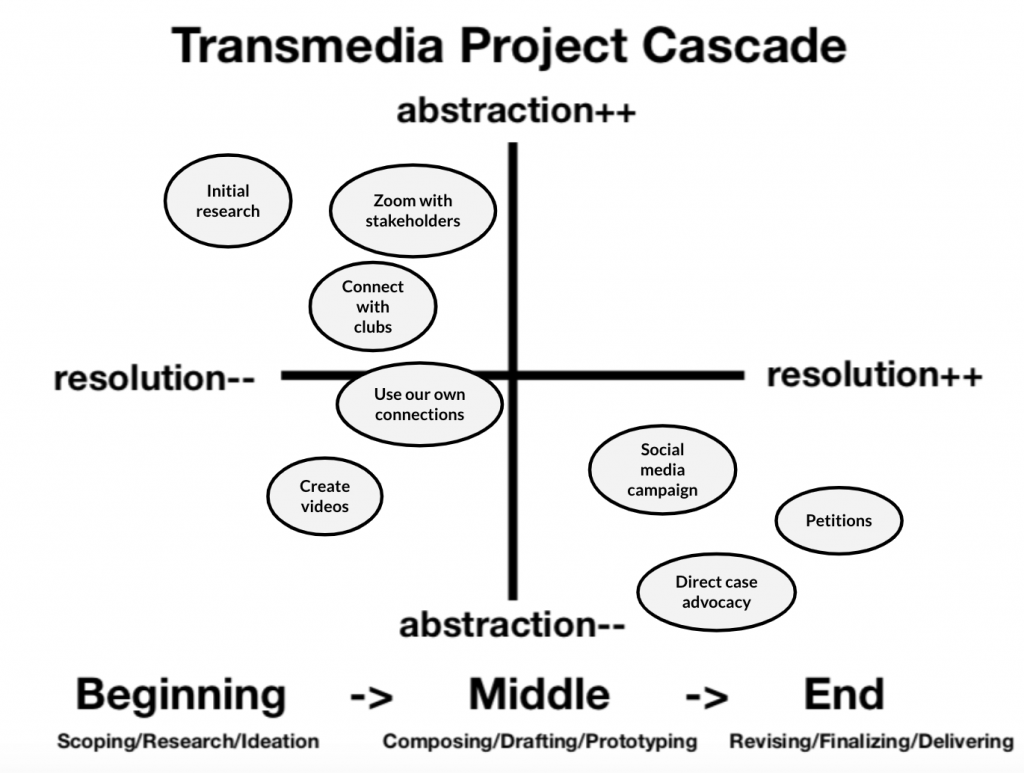
Our team media cascade details our process of brainstorming, with our most resolute and least abstract idea being social media campaigns and petitions. We began as a project focusing on 4 women on death row, as well as the larger movement, but soon narrowed our project for a more time sensitive and serious case — Lisa Montgomery. Lisa’s execution date has been set for early January, a move by the Trump administration that is both unexpected and, as we and our partners believe, unfair.
Within our reframe process, we had many meetings with Professor Babcock and her associates in order to have a fuller understanding of what lenses we need to use for our media campaign and what information is open for us to share. Some meetings were an organizing call with lawyers, media strategists, and other activist groups to discuss specific goals going forward. The reframe our project has undergone took the initial larger movement we had in mind and redefined and reapplied those issues to Lisa’s case. The greater systemic problems are the very ones that failed her, and the prevailing biases are the very ones that crucified her. We want to tell her story, and explain why she isn’t alone. Some of the main themes we will be discussing when advocating for her are: the absence of intervention in childhood, mental health awareness, and amplifying survivors voices.
Second Goal: Cornell Center on the Death Penalty urgently wants to share a well-rounded portrayal of Lisa Montgomery’s trauma as she faces a recently set execution date of December 8th, 2020.
Deliverables
Our Instagram account, @HerWholeTruth, aims to promote awareness for women on death row. Because of the urgency surrounding Lisa Montgomery’s recently set execution date, we are focusing our current efforts on promoting awareness surrounding the injustice in her case specifically. Our partners chose to brand the campaign using #SaveLisa and #EndTrauma.
We have created initial posts in order to build a foundational understanding of Lisa’a trauma. Our posts will give our followers and others the ability to better recognize Lisa’s trauma. When the prosecution focused on Lisa’s criminality and guilt, they avoided the truth: while Lisa committed a heinous crime, she is also a lifelong victim of abuse. Our social media posts prove this truth by sharing the horrific crimes against Lisa and the subsequent, severe deterioration of her mental health. Our posts make the case for Lisa’s clemency by arguing that she is unfit to receive the death penalty.
Example Instagram posts:
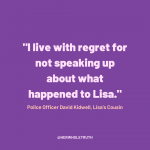
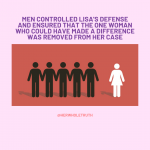

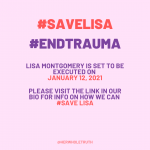

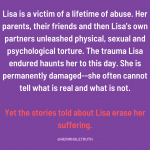
The look and feel of a social media campaign has to be shareable and brief, yet strong — we needed to ideate how to maximize impact while minimizing content enough to fit the platforms.
Tutorial Video
Our team also created a video guide on how design thinking can be utilized to develop social media campaigns. In our project, design thinking allowed us to better spread our message and activism while inspiring empathy in the audience.
Class Concepts
Some of the ways we used the CAT frame when crafting the @HerWholeTruth posts were:
Concept
We made sure the information we shared was public information, easy to understand, and impactful in terms of bolstering empathy and action.
Aesthetic
We varied the formatting of posts to make them less homogenous but still united in theme and color.
Technique
We made sure everything was legible, easy to post and repost, and works with the technology of the platforms we share them on.
A great example of using one of the pieces of the CAT frame to test and improve our work was adjusting the color scheme we used for our posts. We originally began with an orange and red color scheme, but we changed it to purples and pinks for many different reasons. For aesthetic purposes, the purple was something we all found pleasing, as well as being the representative color of domestic violence awareness. For technical purposes, it was easier to read using dark purples against white and pink. We use the CAT frame to carefully curate all of our posts, which keeps our page looking professional and accurate. Design thinking and CAT are integral to creating a credible and digestible social media campaign.
Ultimately, Lisa’s story is the starting point for such a movement. These techniques and strategies can and will be used after our time working on her case ends to bring light to other women’s stories and spread general awareness about the truths of women on death row. We plan to pass this account and knowledge of media campaigns onto our stakeholders to continue its momentum and grow the movement they wanted to start even further.
Visit our Instagram and click the link in our bio for more info on how to help #SaveLisa!
Visit the Save Lisa website!
You can also read more about our project process and experience in our final report.
___
Team
Lara Harvey
Sophomore

Major: English & Government
Minor: Climate Change
Hometown: Montclair, NJ
Genna Haddad

Senior
Major: Information Science, UX Concentration
Hometown: Rye, NY
Arleigh Parr

Senior
Major: Design + Environmental Analysis
Hometown: Bloomfield Hills, MI
Samantha Chu
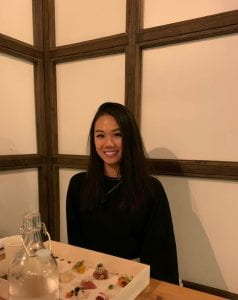
Graduate Student
Major: MPS Information Science
Hometown: Long Island, NY
Sophia Wang

Graduate Student
Major: MPS Information Science
Hometown: Paoli, PA
